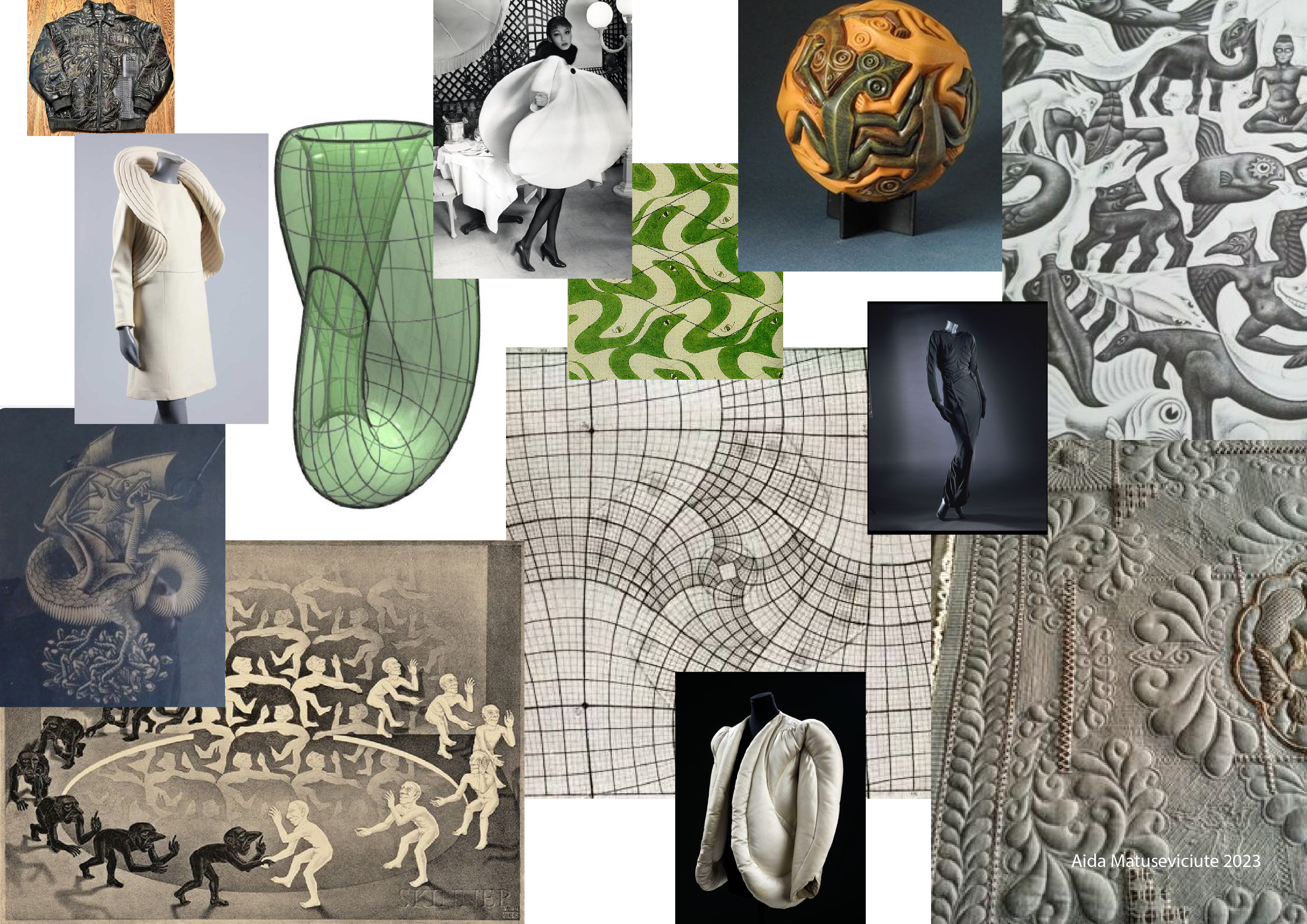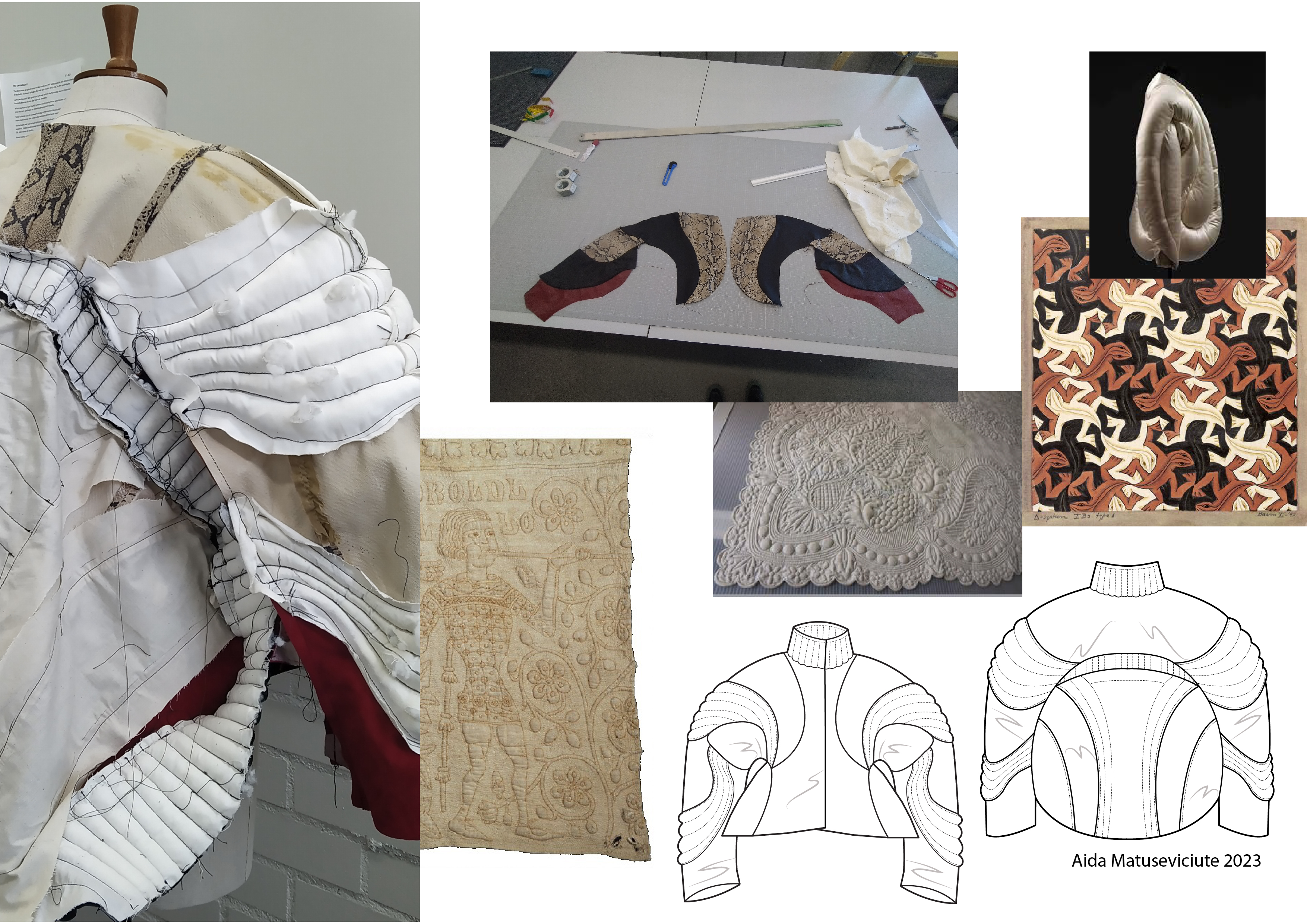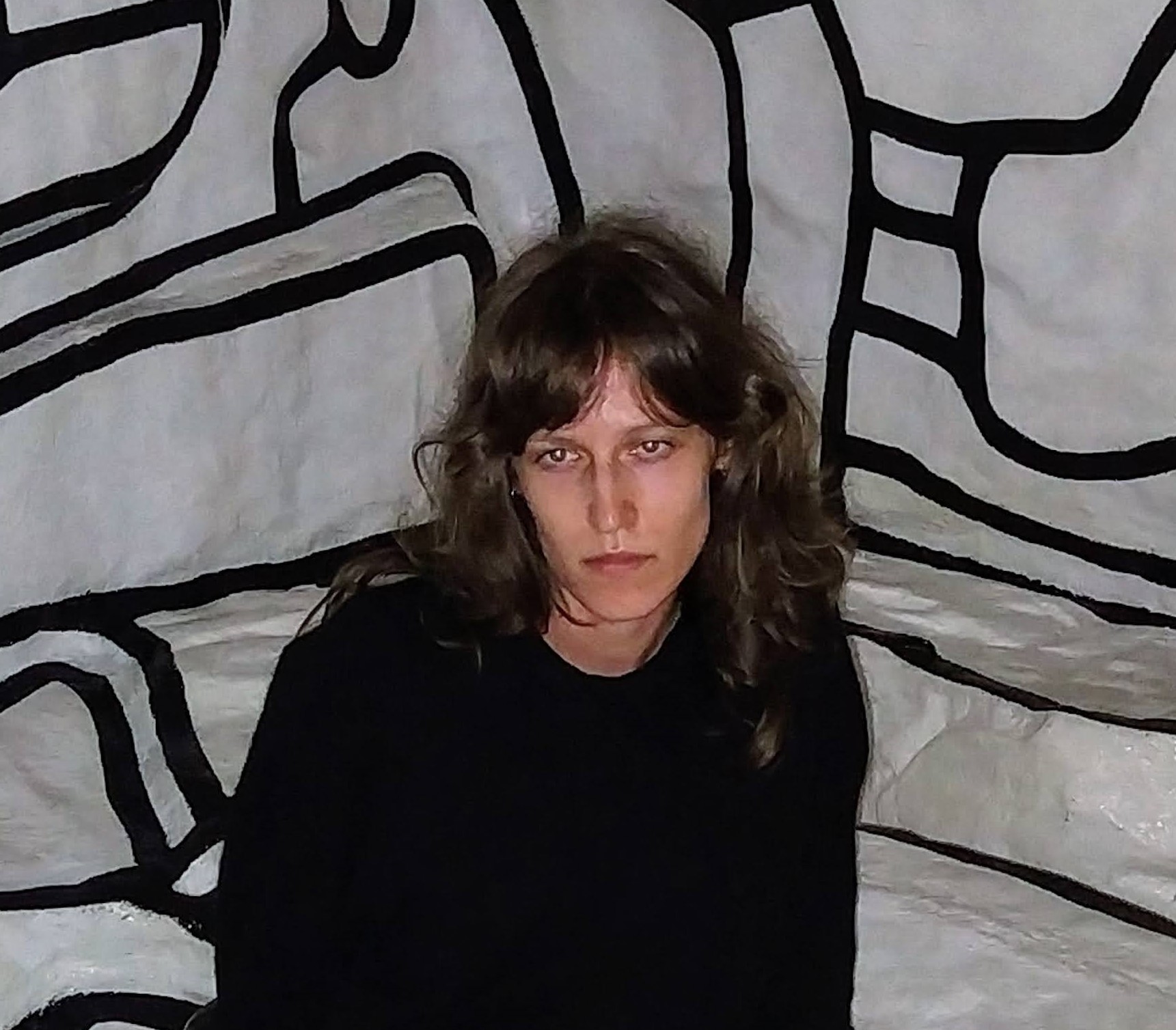Tessellation upcycled leather jacket
Category: Apparel
The purpose of this work is to examine how limited material resources contribute to unexpected creative solutions in upcycled garment’s surface design creation and construction. The research focus is on the artisanal design process and the designer’s relationship with such process and the material. During the research phase, I mainly focused on animal archetypes and tessellation principle as I started to see their potential of storytelling for material surface and construction. Tessellation is a good example of connectivity as objects share contour and it is challenging to determine where one starts and another ends. For me, this principle is associated with the patchwork technique and connecting separate fabric pieces into cohesive material surface. I was inspired by Escher’s animal tessellations. Tessellation interested me of its dynamic and turning quality, which I am trying to embody in garment’s construction by utilising flowing, turning and silhouette hugging lines. Hints of animals serve this work as an elements for tessellation, and- as an archetypes for storytelling. In the search for construction I started with the analysis of Charles Jame’s early 1970s arc sleeve structure, his kimono blouse patterns, and Jame’s Eiderdown jacket. I was also investigating early Pierre Cardin’s work produced in 1969, and 1988, where he put direct emphasis on circle elements, because I wanted to use a circle shape for the back part of the garments as it would embody a more relaxed silhouette. The front of the garment construction was more an interpretation of Charles James’s elegant round shoulder line and arc sleeve structure as it is more figure hugging and tense. The outcome of this work is the upcycled leather jacket. The leather jacket is made from a recycled real black, red and beige leather (printed with snake graphics). Used leather pieces were both postconsumer and preconsumer waste. The main surface manipulation techniques used are patchwork and trapunto. The usage of trapunto occurred gradually during the creative process as a strategy to camouflage some needle marks left by previous seams and to accentuate the round shoulder line in the silhouette. Trapunto technique is also used as a carrier for storytelling and the expression of creative narrative through surface manipulation. This technique is applied in the black leather parts of the sleeve, around the collar and some regions in the back vertically the round ellipse shaped construction. The three dimensional parts of the garment are filled with recycled polyester puff material. During the development of a leather jacket the main construction was splited to several parts because of the leather shortage, thus patchwork was utilised, and this created more visually interesting color blocking surface. Leather jacket is paired with short asymmetrical upcycled leather miniskirt that visually resembles turning quality of the jacket’s surface and is created with patchwork as well. Thus jacket and skirt is uniform look where the same materials and similar visual solutions are applied. Despite that mini leather skirt is without trapunto and also includes raw edges, whereas jacket should possess full finishing with recycled burgundy color polyester lining. My personal motivation to conduct this material study through garment lies in my willingness to explore limitations in the artisanal creative process as a positive aspect. Also, I am led by my personal curiosity to observe how limited leather resources can paradoxically expand the creative solutions in the process by introducing new ways of manipulating the material surface as a way of problem solving. Fitting images depict garments in the process stage (unfinished).



 Copy URL
Copy URL
 Login to Like
Login to Like 